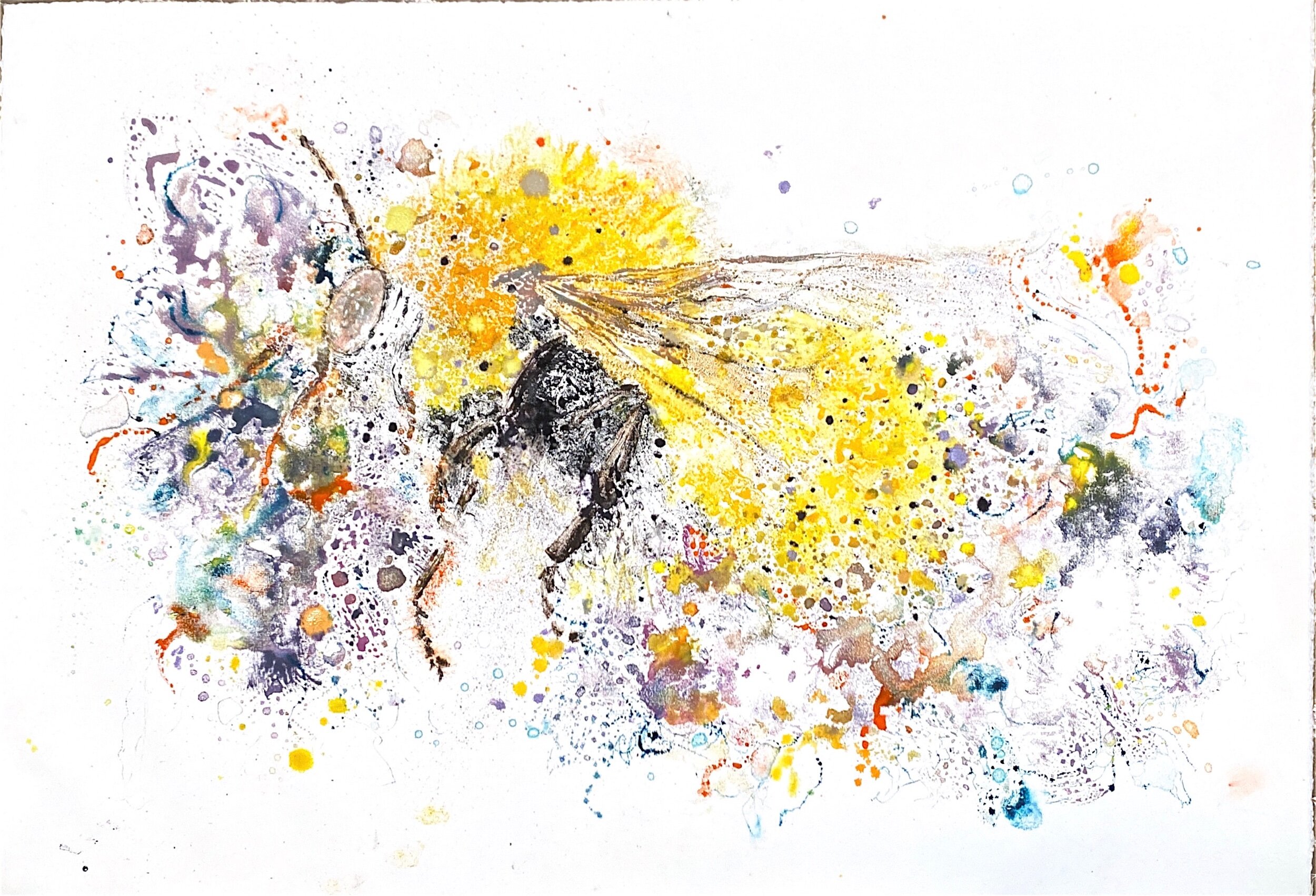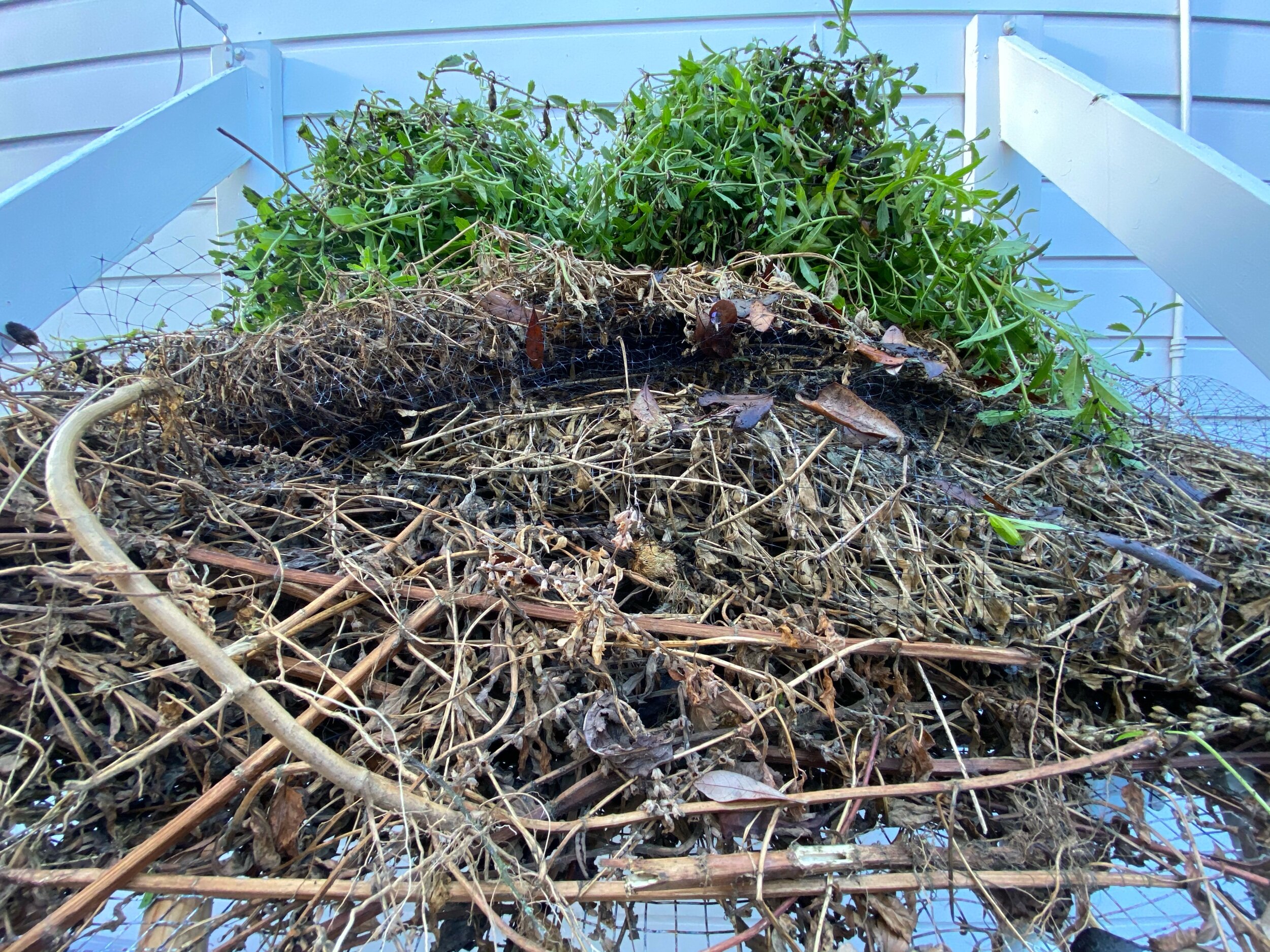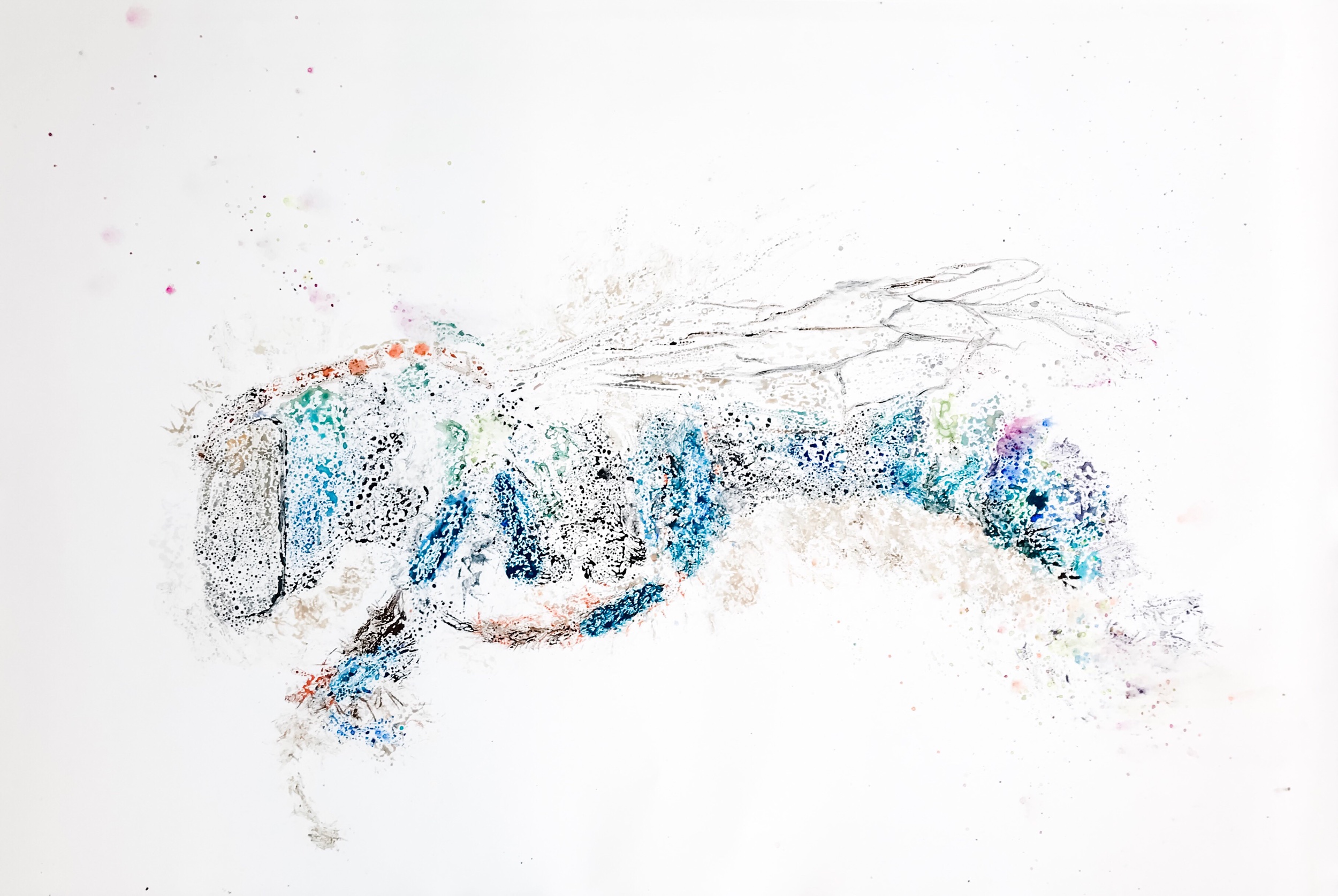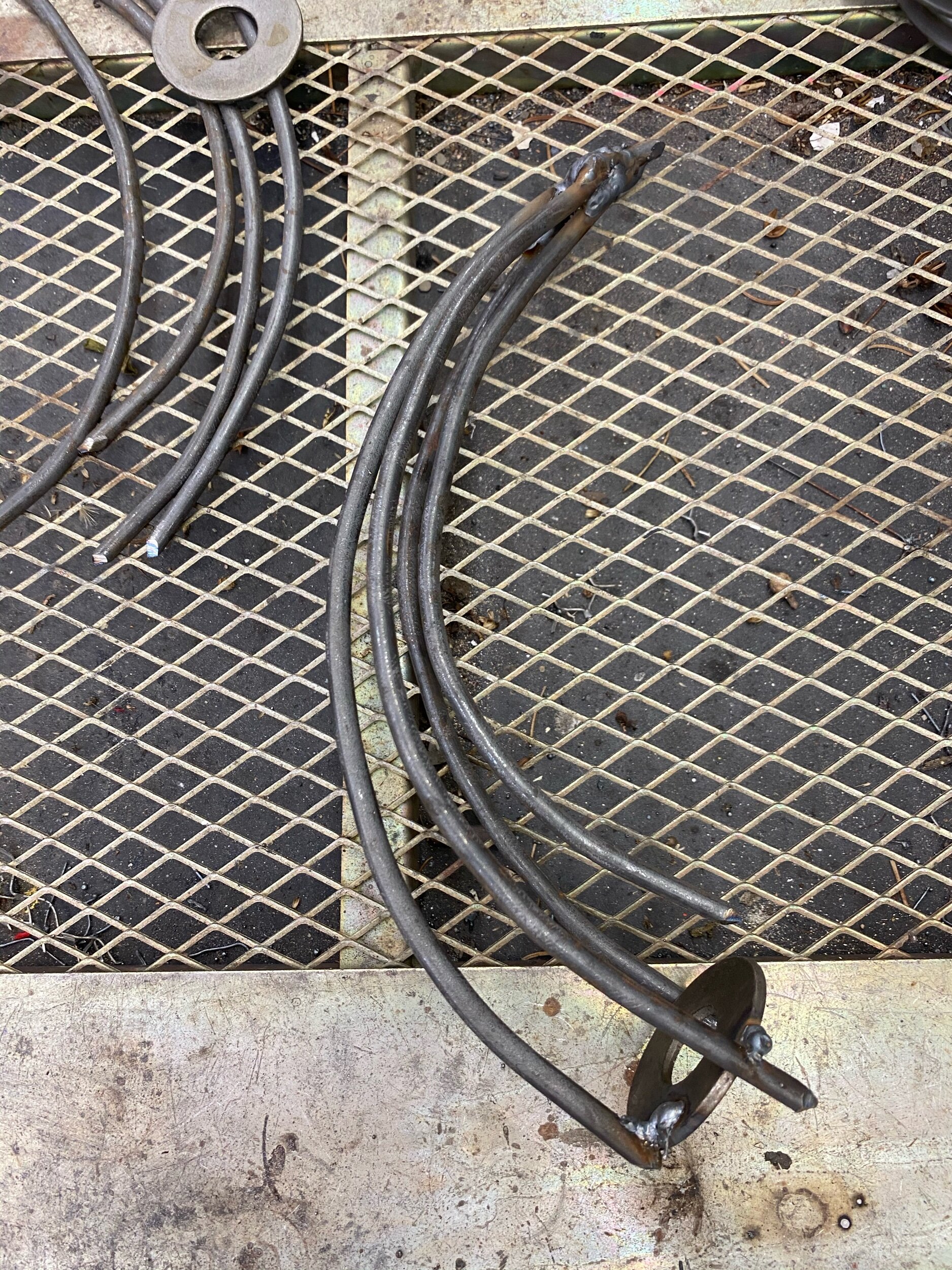Bombus Morrisoni II Ghost
I was not happy with the first Bombus Morrisoni so I made more. The first is swimming in violet blooms
Bombus Morrisoni III
Bombus Morrisoni III ghost
Your Custom Text Here

Bombus Morrisoni II

Bombus Morrisoni II Ghost
I was not happy with the first Bombus Morrisoni so I made more. The first is swimming in violet blooms

Bombus Morrisoni III

Bombus Morrisoni III ghost
Sometime in 2019 or late 2018 I discovered the USGS photographic library of wild bees. I was overwhelmed at the number of species and their individual beauty. They are jewels of the insect world. These facts combined with the reality that most well educated people believe that there is just one bee species - the honey bee. There are 20,000 species. How a creature who is responsible for our food could be misunderstood to this existent is baffling. Scientist just started realizing the error in their studies last summer. Committing to telling the story of the plight of the most important being on the planet is a worthy story. I have always felt the need to support underdogs.
Below us the artist statement for the project as I incusion it today. Artist statements remain fluid as I work on big projects.
RUMBLINGSA rumbling in the distance is nature's way to alert living creatures to their environment. Rumblings; monumentally draws attention to the 20,000 unknown species of threatened wild solitary bees. The bees that can not bee industrialized. The watercolor ink carefully manipulated on the fifty interconnected monotypes to reflect the synergistic, aqueous effect of; the unexplored bee species superior magnetic attraction of golden dust, the movement of the anonymous Keystone species dedication to pollinate, and their fragility due to the applied chemicals that flood industrial agriculture. With Rumblings, there is knowledge and knowledge is power; it is a resounding call to all for action.
The COVID 19 quarantine in March was a huge buzz kill to this series. These are all monotyoes. I use the plexiglass surface to create my water effect that I then press into the paper. I am very attached to this method as the best way to communicate this work for a few reasons. 1. It is a process I created and as far as I know no one else creates monotyoes with this type of mark making., 2. The watery look suggest the use if pesticides that are impacting their extension and lastly the tiny details that make up the bee is suggestive of pollen dust. I have been creating this pieces in MFAH beautiful Glassell studio school printmaking studio. With COVID that us not an option for me.
Since March, I have stitched bees and tried to be open-minded to another process to complete the series. I finally decided to see if I could hand press a 30” X 44” print in my studio.

Here I am applying the ink to the plexiglass. On the wall is a photo of Bombus Dahlbomii, the largest humble bee in the world at 2” long and endangered if it us not already extinct. The photographs are stunning. The photographs are taken if dead bees. In ny pieces, I try to put movement and energy back into the buzz pollinator.


Here I have just pressed the plexiglass with the watercolor ink bee image onto the wet paper. And surprise surprise surprise.

Bombus Dahlbomii IV
I have made three other attempts to print this monsterous fluffy ginger and not been happy with the results.

Bombus Dahlbomii IV Ghost.
The prior attempt are below. Getting a mono-colored fluffy bee with out muddying the ink was tricky.

Bombus Dahlbomii Day I

Bombus Dahlbomii Day I ghost

Bombus Dahlbomii Day II

Bombus Dahlbomii Day II ghost

Bombus Dahlbomii Day III

Bombus Dahlbomii Day I'll ghost
I am hoping the Bombus Dahlbomii day IV pieces cut the mustard. I am feeling hopeful and extremely excited that I can create monotypes without a press Is this non-verbal size.
“The soil is the creative material of most of the needs of life. Creation starts with a handful of dust.” - Dr. W. A. Albrecht ph. D.
That is a powerful thought. How important is soil to our health? For me it is clear.
And it is not dirt, it is not clay, it is humus living soil.
This quote is deeply tied to all of my current work, in The Endangered Knowledge piece that I am in the early stages of welding soil is the material that will become the protective layer of the keystone species, in Subterraneous Secrets soils energy is stabilized and captured through root systems, in Mute Testimony, it records its history, in Gust the life it provides is Endangered. In the photography of life in my cement pond, it establishes natural rhythms and compliments the other living systems. The pond is a complete ecosystem; it is free of pesticides and herbicides. In this type of ecosystem, even the blooms in their last phase of life are beautiful as the tiny microorganisms convert them back into minerals that build soil health. #inmycementpond In this image, you can not see the humus, but you can see the magic in the life it brings when we allow it to thrive in a natural state.

Subterraneous Secret is part of my Endangered Knowledge work. For several years, I have been researching grass-fed food production, attending soil conferences, and visiting regenerative ranches. Research in these fields shows how to fight desertification and reverse climate change through regenerative agriculture practices. Interestingly, this natural history of living soil, how it evolved with roots, fungus, plants, food, and animals, carbon and their essential roles within microbial communities in human health, is not common knowledge.

Subterranean Secrets II
bronze
Art/computer work that has interfered with my welding but I never miss an opportunity to collect native plants. I have converted an old kayak rack into a plant drying rack. Stacking up and drying out.

Drying native grasses

Osmia Illinoensis
30” X 44” watercolor monotype.




Day two, #2 the ghost





Day 3 caran d’ ache monotype

The ghost

Today I worked on the lower part of it's cheekbones and then I added a rear jawbone.

Looking up the mouth and nose of head minus the lower jaw.

The old guys face left side

Looking through the skull

The right profile.

Here is a collection of my reference material.

Bison grab a tuft of grass with their tongue, then they pinch it off by pressing it between their tongue and their front lower teeth. They do not have top front teeth. They then swallow it whole. That is the beginning of a 24-hour digestive process.

I love this image, I took it last January at Roam Ranch right before the roundup. I think this is the one they call Poppy. Poppy is very curious and friendly. She is checking me out as she catches rain drops on her tongue.

You can see the lower jaw through the upper jaw here. It is slightly off to the right of the bison. I want him chewing away and want to exaggerate the movement. I will probably bend it a little more askew this weekend.

Here the chewing lower jaw is more obvious.


View from the rear or top down.

Friday, I am committing to writing the Lawndale proposal- rewriting and rewriting and rewriting.
I am getting close to finishing the head and upper jaw. The next step will be to create the lower jaw, then I will put the head aside and start building up the piece from the hooves.

More work on the cheekbones and connecting the horns to the eyes.

Side view of armature

Bottom side view

Bison's left side view

Back of head looking down
For the full story see Endangered Knowledge: The Soul of Humus #1a
The head is a lot of detail work. Bending small pieces of steel takes time and strength. It is easy to bend large pieces of steel because I can use leverage to bend it. Small parts are too short To get much lecerage. This is the first time in my life strength is an issue., I have not been doing my regular weight lifting due to COVID 19 quarantine. So I have to think of creative ways to make the shapes I need. It takes longer to figure out.

Examining this work I have decided I need to raise the left horn.
I have only welded the horn in one location. This will make it easier to correctly position the horn once the head is connected to the body. I can find them if I want, or I can cut the one weld and resend them in the correct position.

I moved the horn and added the front of the upper jaw.

I added the back of the upper jaw and two pieces to stabilize the head. The stabilizing pieces run through the center of the head, the length of the face to the back If the skull. I used the angle grinder to separate the front and left sides of the front jaw separating the two stabilizing pieces. This will make it easier to make any adjustments in the head structure when it is finished and attached to the body.
The skin and coat of the finished piece is the most crucial part if this piece. This steel armature is purely structural.
For the full story see Endangered Knowledge: The Soul of Humus

I have cut the steel for two sets of horns, the center of the face, top of the scull and part of the nisee. .

Working on the horns

This bison skull was a Christmas present. From Griffin and Alex my son and daughter in law. They have been unbelievably supportive of my environmental works. They are the best. The skull is proving extremely helpful in figuring out how to build the head armature.
For the Full story see Endangered Knowledge: The Soul of Humus
It does not stand to reason that gardens or yards in Texas, Maryland, California, Iowa, and Illinois should all be landscaped with the same selection of plants. The below image from Native Texas Gardens says it all. In a country with great diversity from coast to coast, shouldn’t the sculpture garden landscapes be embedded in plants that define the place?
It will be more interesting to see sculptures in gardens of indigenous plants, plants that define the place, terrains that have attracted its people and impacted its economy. A sculpture of a boat marooned in a desert landscape might imply global warming and the same wooden vessel docked in a sea of woody pines congers up thoughts of concervation. one thing the same boat Sculpture changes across geography. What does sculpture look like in a coastal prairie sculpture garden?

Page xviv of Native Texas Gardens, maximum beauty, minimum upkeep by Sally and Andy Wasowski.

I am starting to design and build the armature (the support structure) of the piece. The structure will be supported with welded rebar and then covered in a steel lath to help hold the mud and dried native plants to the sculpture.
I begin with the hooves It takes a lot of muscle to bend a piece of rebar enough to make a complete hoof side, I will have to piece it.

I did not measure the circumference of a hoof but I do know the ankle is 12” and hoofs are bigger.

I think best in wire or a material I can shape by hand - by feel. I decided to wrestle up a wire sketch of a hoof to get me started.

The front part of a front hoof

Front hooves started

This was awesome to receive, I am feeling hopeful. It is amazing to have a city Council Woman who cares and listens to citizens opinions. Screenshot from my phone email.
Sally and Hannah
The video of the FY21 budget workshop-Parks and Recreation was very informative.
Here is what I got out of the video that will help you move the city in an environmentally forward direction. I have broken it down into five steps.
Steve Wright knows the value of native plants and grasses. He expressed that he would like to move more in that direction. He does not because the public is not educated. With Steve on board, this is a great opportunity, and the timing is perfect. Sally, it is great you identified this opportunity, by leading Steve you can save the city money and the planet.
Step One – In Steve's presentation, #5 Greenspace Management (GSM), the city is spending $2,000,000 on mowing esplanades, and in #15 Quality Assurance, they spend $2,500,000 for safety training to maintain the esplanades. Making all esplanades native grasses is a change that will free up a significant amount of money and help all insects as well as the bee. With Covid 19 sucking the life out of the country, the financial savings alone is reason enough to make the transition. This change will start the education of the citizens. Now is the time to take the first step in making Houston a leading city in environmental policy and help with the budget.
Step Two – Steve did not mention the chemical additives or equipment the city uses. City Parks and Recreation would also save money on the chemicals used on manicured landscapes such as herbicides, pesticides, fungicides, and neonicotinoids. This change would also impact the dollars spent on equipment and fuel for lawnmowers. Have Steve add that number up for you.
Step Three- Have Steve's people look at every area they manage: the city libraries, trails, parks, sports fields, golf courses. The zoo should also be charged with evaluating its grounds. Have them identify pockets in these city public spaces where they can save money by transitioning to native plants. There is a lot of precedent in other cities for native plant golf courses. Golf courses use an extreme amount of labor and chemicals; this could be a significant number in the budget.
Step Four – Steve mentioned Public Works land. It was not clear whose budget it is in, but it should be maintained in an environmentally forward thinking manner.
Step Five – Steve was concerned about the public's knowledge of the benefits of native landscaping versus the mindless conformity of the manicured landscapes that we are used to seeing. This education is a project for his new social media employee. In addition, the Mayor should call a press conference and make a big deal of the City Councils' commitment to not only the health of it’s citizens but also the environment and not mindlessly conforming to unhealthy chemically dependent landscape practices and to saving Houstonians a lot of money. The Mayor can also go into the benefits of restoring native prairie vegetation as it decreases water runoff and flooding, increases soil absorption of water and slows floodwaters on land.
A press conference is excellent advertising. It can also be addressed on the citiy’s website.
If you need inspiration, look at the 5/2020 National Geographic, Where Have All the Insects Gone? Pp. 40-65. The article is a study from 1989 to 2016 of flying insects. The study reported a 70% decline. You will find quotes such as "ecological Armageddon", "we find ourselves in the middle of a nightmare", "According to the website Altmetric, which tracks how often publish research is mentioned online, the study was the sixth most discussed scientific paper in 2017."
Insects do the dirty work for us; they pollinate, disperse seeds, are food for freshwater fish, and about every land animal, from reptiles to birds. They decompose our waste; without insects dead, organic matter will pile up. N. G reported the work insects do is equivalent to $57 billion a year in the US.
After you tackle the City Parks, we can look at residential and commerci
It was never my intent to become an environmental activist – I am beginning to wonder if that is what I am. Since the below email I have had one meeting with Sally Alcorn and her assistant Hannah Cobb. They are on board with my thoughts and want to help. We decided the first step is to look at the citi’s present landscape ordinance, and then Coronavirus 19 hit Houston.
I guess even in a pandemic certain things have to continue, such as city budget planning. I received an Instagram message from Sally April 27th at about 11:00 pm regarding a video of the City Council meeting and the City Parks budget. I will make another blog post summing up the results of that meeting. Maybe this pandemic will open some doors that normally would not budge.
TO: Sally Alcorn salliealcorn@comcast.net
Dec 27, 2019, 10:14 AM
RE: Houston’s impact on bees.
Sally,
It was great to run into you at the mother-daughter Christmas party. I appreciate your interest in positioning Houston to become the leading city in the U.S., addressing the native bee environmental issue. You have a lot on your plate with your new elected position, so I thought I would recap a few of the important topics we discussed.
Scientists predict that without pollinators, human life can only continue for four years. In 2017, the U.S. Fish and Wildlife Service listed the Rusty Patch Bumble Bee on the endangered species list. The campaign to list a species as endangered is lengthy and complicated. With this system, it is difficult to gauge how many species are actually endangered.
Bees are responsible for pollinating 75% of the world's flowering plants; they are crucial for the production of most fruits, nuts, and berries – our agriculture depends on pollination by bees.
Rural areas are highly impacted by the unanticipated consequences of our industrial agriculture’s dependence on chemicals that weaken bee’s immune systems. Urban bee populations can be more diverse than in rural areas. Researchers are finding in cities such as Chicago, Berlin, Berkley, and Melbourne that have reimagined their parks, neighborhoods, city centers, vacant lots, street medians, and rooftops planted with native flowers, grasses, and fruit, and vegetables support healthy, vibrant wild native bee populations.
In the US, there are four thousand native bee species. They pollinate over three hundred times more effectively than honey bees. For example, A single female Leafcutter Bee visits 100,000 plus blossoms per day whereas a honey bee visits 50-1000.
Unlike the honey bee, Native bees do not swarm, are not aggressive. Native bees are perfect for urban population centers.
Houston covers 600 square miles of land and has one of the longest growing seasons in the U.S. As it continues to sprawl across Texas, its gardens must increasingly become a refuge for native plants and animals. With 2.3 million people living in the most vital economic, cultural center of the south, we can become the most critical urban native bee habitat in the United States.
I have spent the last year and a half studying the bee situation as it pertains to my art and my interest in regenerative agriculture. I am determined to take this knowledge and save the bee in urban settings.
With Houston's land size, population, and location in the Sunbelt like it or not-we are impacting the bee population.
I realize we will have to start with baby steps. Let's put our creative minds together, save the native bees, and build a better energy capital. This is a great opportunity for our new city council.
I am very flexible are weekdays or weekends better for you to get together?
Best,
Cindee
P.S.
If Cuba can create urban gardens to feed it’s poor can you imagine what we can do.



ps. I now have the equivalent of another silo full of work in my studio………. bursting at the seems. Anyone need a keystone animal environmental installation?



Close up of support system

The moment I got off the scissor lift and looked up at my support system, I realized I had made a big mistake. I should have painted them white. The black stood out too much on the white walls. I could not sleep that night trying to decide if I should repaint them... It was not easy, but I spent the next half day painting the system 19’ in the air white.

I think it was worth it, the support system is much less intrusive.
I hung from the support system 8 fishing tackle swivels with 25 lb filament attached to each swivel. Four of the swivels are 36” apart 18” from the wall. At these distances the pieces will not touch each other or the wall. Everything should move independently. These are for the big pieces. The other swivels are for smaller pieces and are spaced randomly. I am guesstimating where I want these. Tomorrow I will start hanging work.



My safety engineer and the most supportive husband anyone could ask for. He is affectionately known as Mr.Safety. 🤗

The view of my silo workspace from the scissor lift.


Detail of grid system.

Without bees we would not have cucumbers or watermelons
Today harvest at the farmers market.